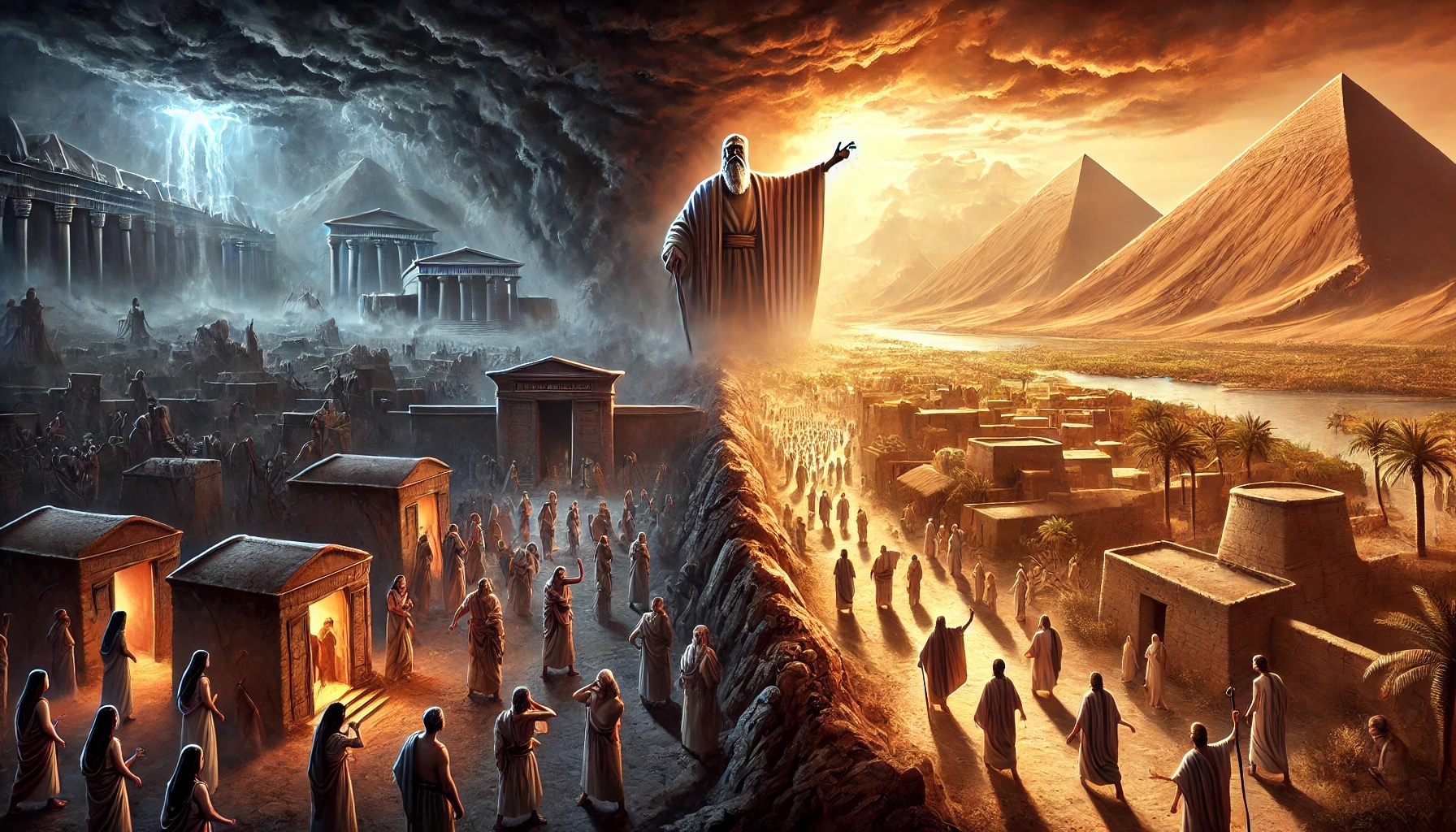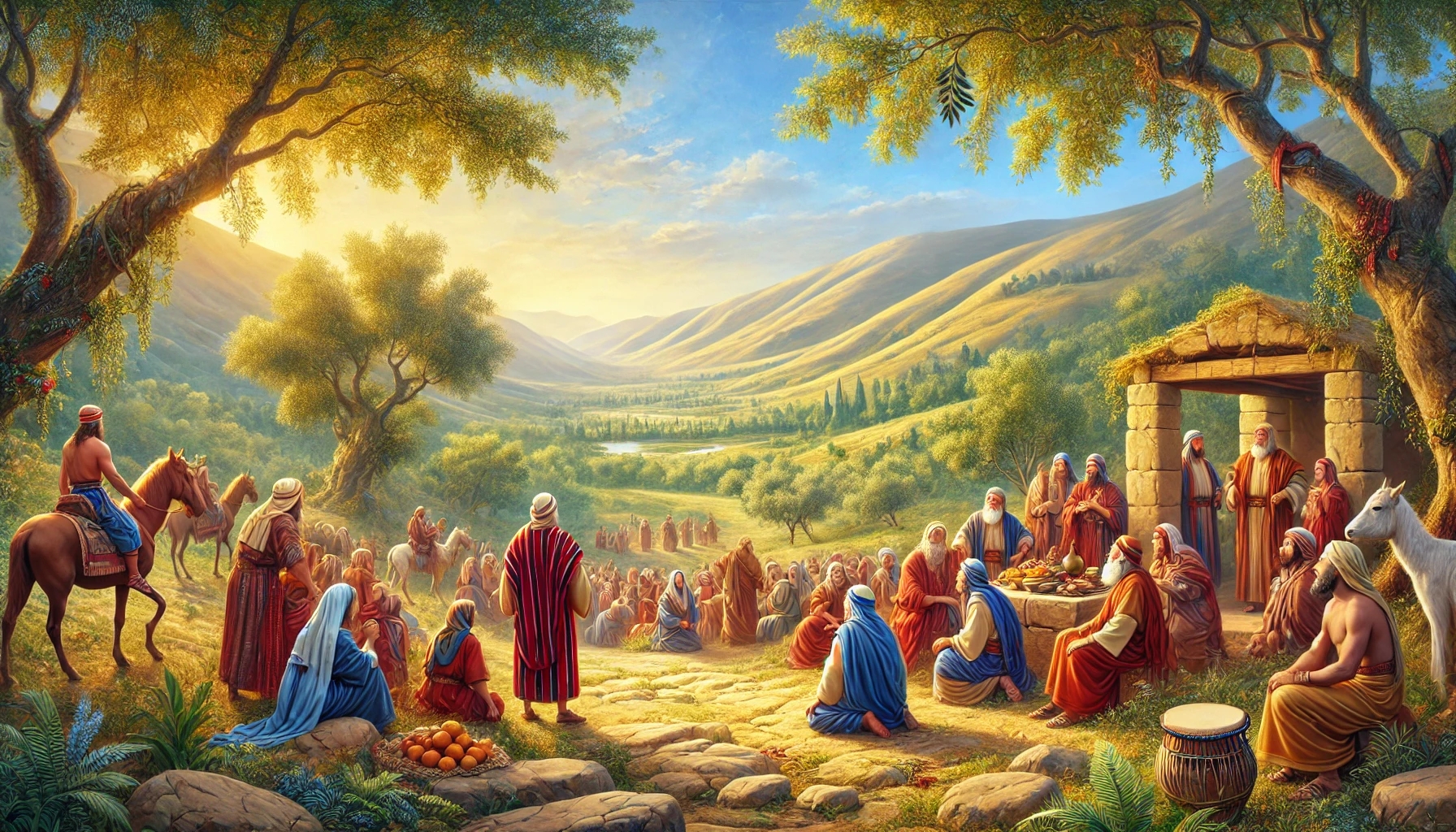We’ve just returned from St. Louis, Missouri, where the 62nd General Conference Session was held. What an uplifting experience! And we had the opportunity to share with people from all over the world what God is doing through the work of Adventist World Radio! Some of the highlights included: • AWR VP Cami Oetman’s presentation with an overview of AWR projects, and a report from PNG for Christ. • The baptism of one of the military generals from Mindoro, Philippines. He was moved by our work among the New People’s Army (NPA) rebels, and while he watched us work, he also learned the Adventist message. • The distribution of two new AWR miracle story books, one of them highlighting the story of Wisam Ali, a true life of miracles. Here is a short video where Cami and I share some of these highlights and the way God has intervened in the lives of so many people. I know I say it often, but what a time to be alive! Yours in the Blessed Hope, Duane McKey
President P.S. It was wonderful seeing so many of you at the AWR booth during GC Session, and I hope to see those of you who will be attending ASI next week! MB01MEXKGCQOCNE Source: https://www.youtube.com/watch?v=wQuP5cygDH4
General Conference Session Highlights
Relive the highlights of the General Conference Session: women stood out with their leadership and traditional attire, media evangelism took center stage with Hope Channel and Adventist World Radio, leaders received intensive training for mission strategy, and the international Heroes Bible game inspired youth worldwide. All this and more, now on ANN. Stay tuned as ANN brings everything you need to know about what is happening in the church worldwide. For a deeper dive into these headlines, visit https://www.adventist.news ANN is the official news channel of the Seventh-day Adventist Church.
Follow ANN on social media!
Whatsapp: https://www.whatsapp.com/channel/0029Vap6xVnLSmbezxbMpa18 Instagram: https://www.instagram.com/adventistnews/ Facebook:https://www.facebook.com/AdventistNews X: https://twitter.com/adventistnews Source: https://www.youtube.com/watch?v=rMGbpYqLnMw
Brazilian Adventist Medical Team Offers Humanitarian Care to Refugees in Lebanon
For the third consecutive year, the Associação de Médicos Adventistas (AMA), an Adventist physician organization in Brazil, carried out a humanitarian outreach in Lebanon, partnering with the Winners Project—a charitable organization that suppor… Source: https://adventist.news/news/brazilian-adventist-medical-team-offers-humanitarian-care-refugees-lebanon
4: The Plagues (Exodus 7-10) Teaching Outline
 Introduction: This week I trimmed a door and then painted it – poorly. I’m such a terrible house painter that when my family gets together, tales of my past wall painting adventures are recited for amusement. Am I insulted? No. If part of the family tradition were stories about my terrible teaching, that would be painful. Some criticism matters. We previously discussed Exodus 5:2, where Pharaoh said he did not know the God of Israel, and he had no reason to obey Him. We will learn this week that the plagues on Egypt were not simply punishment for disobedience; they belittled the gods that Pharaoh knew and presumably feared. Let’s plunge into our study of the Bible and learn more!
Introduction: This week I trimmed a door and then painted it – poorly. I’m such a terrible house painter that when my family gets together, tales of my past wall painting adventures are recited for amusement. Am I insulted? No. If part of the family tradition were stories about my terrible teaching, that would be painful. Some criticism matters. We previously discussed Exodus 5:2, where Pharaoh said he did not know the God of Israel, and he had no reason to obey Him. We will learn this week that the plagues on Egypt were not simply punishment for disobedience; they belittled the gods that Pharaoh knew and presumably feared. Let’s plunge into our study of the Bible and learn more!
I. Uraeus
A. Read Exodus 7:10-12. Were the staffs of the sorcerers real snakes? (Verse 12 specifically states, “they became serpents.” We previously discussed that this power was undoubtedly demonic.)
B. Read Exodus 7:13. What reaction was Moses looking for in Pharaoh? (No doubt Moses wanted Pharaoh to say, “I’m not fighting with your God. You can go.”)
- Was this a credible demonstration of the power of God over the Egyptian gods?
- Think about the pictures you have seen of the crown worn by Pharaoh. What is on the front of the crown? (It is a hooded cobra. According to an Internet presentation by the Carlos Museum of Emory University, this crown is called an uraeus, from the ancient Egyptian word yaret, which means “the one that rears up.” A common American expression by one who is defeated is “he ate my lunch.” God belittles the god worn by Pharaoh by eating it for lunch!)
C. Read Genesis 3:1. Whose “lunch” is really being eaten? (Satan’s. Pharaoh is Satan’s agent, and Satan is not giving up easily.)
II. Hapi and Osiris
A. Read Exodus 7:15-16. Why do you think Pharaoh would go “out to the water” in the morning?
B. Read Exodus 7:17-19. What did the Nile do for the Egyptians? (It brought life. It produced crops. Hapi and Osiris were Egyptian gods associated with the Nile.)
- Why, of all things, would God turn the water of the Nile (indeed all the water) into blood? Why not oil, vinegar, sludge, or something else?
C. Read Leviticus 17:11. What does blood symbolize for the Hebrews (and now Christians)? (Blood brings atonement. It gives us eternal life. It is God’s symbol of life, not water. Thus the Egyptian symbol for life is now replaced with God’s symbol for life.)
III. Heqet
A. Read Exodus 8:5-7. Imagine a discussion about conquering Egypt and one person suggests, “Let’s send frogs.” What would you think of that suggestion?
- While researching the ancientegyptblog.com I found that the Egyptian god Heqet (or Heqt) was a woman with a frog head. She was the fertility goddess. Heqet also had the task of making sure that the crocodiles ate enough frogs to keep their numbers in check. Why would God target Heqet?
B. Read Exodus 1:9 and Exodus 1:22. What was Pharaoh attempting to do with the number of the Hebrews? (He was trying to limit the number of boys.)
- Should Pharaoh understand that God has a message that He can control the fertility of the Egyptians? Recall that the relative number of Egyptians and Hebrews was what started the problem.
C. Look again at Exodus 8:7. Is this helping? Why would the magicians create frogs? (They simply looked at this as matching the power displayed by God. Note the text does not say they created frogs, rather they made them “come up on the land.”)
D. Read Exodus 8:8-10. For the first time Pharaoh agrees to let the Hebrews go to sacrifice. Why do you think Moses asked Pharaoh when, exactly, he would like the frogs to be gone? (This shows the power of God. Unlike Heqet, He can bring the frogs and He can take them away.)
IV. Geb and Set
A. Read Exodus 8:16-17. Geb was the god of the earth and dust, and Set the god of the desert and chaos. Why would God send gnats? (If you thought the frogs were annoying, God now sends insects that suck blood from humans.)
B. Read Genesis 2:7 and Genesis 2:19. What is the relationship between the ground and God? (God used the ground to create man and animals.)
C. Read Exodus 8:18-19. The magicians could not mimic the creation of gnats from the earth. Why would they admit this represented the power of God? (This is an excuse. So far they have mimicked the signs of Moses and Aaron. But now they are dealing with not only a God, but one stronger than their gods.)
D. Read Luke 11:19-20. What should Pharaoh have concluded? (The Kingdom of God has come upon him.)
V. Uatchit and Khepri
A. Read Exodus 8:20-22 and Exodus 8:13-14. Put yourself in the place of the Egyptians. You have all of these dead, smelly frogs around you and now you have flies which are no doubt landing on the dead frogs and then landing on you! Aside from being annoying and painful, why would God send flies? (Khepri was the god of new birth. Uatchit was the goddess of the flies and she guarded all life in the Nile Delta. Now these gods are feasting on dead frogs and humans!)
B. Look again at Exodus 8:22. How does this fit into the dispute between the true God and the Egyptian gods? (The Hebrews are protected against the flies.)
C. Read Exodus 8:25-28. Pharaoh is now in negotiations with Moses! What reveals the defeat of the Egyptian gods? (Pharaoh asks that prayers to the Hebrew God be made for him.)
D. Read Exodus 8:31-32. Are you like this? You pray that God will help you with a specific problem, and when He does, you go back to your old ways?
VI. The Lesson
A. We still have plagues five through nine left in this study. Like those we just examined, each belittles the gods of Egypt. Read Exodus 9:15. What does God tell Pharaoh is an alternative to the plagues? (God could have killed them all with “pestilence.” God has created difficult and annoying problems, but He did not wipe out the Egyptians as a nation.)
B. Read Exodus 9:16. What reason does God give for sending plagues and not death? (To show God’s “power so that [God’s name] may be proclaimed in all the earth.”)
- Does this explain why God targeted the gods of Egypt?
- Read Exodus 9:11. Who is God attacking here? (The plague of boils keeps the magicians from confronting Moses. Satan’s agents are immobilized.)
C. Read Exodus 9:17. What is at the heart of Pharaoh’s sin? (He is exalting himself against the people of God.)
- Is this a problem in your life? Do you exalt yourself by harming those who love God?
D. Read 1 Samuel 2:30. Is God against a person being honored? (If you honor God, He will honor you. Pharaoh’s sin was that he would not honor the true God of Heaven.)
- In plagues five, seven and eight God destroys the wealth of Egypt. What is the lesson in this?
E. Friend, will you make the primary goal of your life to bring honor to God? If that is not already your goal, why not decide right now to make that your goal?
VII. Next week: Passover.
Copr. 2025, Bruce N. Cameron, J.D. Scripture quotations are from the ESV® Bible (The Holy Bible, English Standard Version®), copyright © 2001 by Crossway, a publishing ministry of Good News Publishers. Used by permission. All rights reserved. Suggested answers are found within parentheses. If you normally receive this lesson by e-mail, but it is lost one week, you can find it by clicking on this link: http://www.GoBible.org. Pray for the guidance of the Holy Spirit as you study.
 (0)
(0)Source: https://ssnet.org/blog/4-the-plagues-exodus-7-10-teaching-outline/
Evangelistic Outreach in Armenia Brings Hope to Border Communities
In a recent outreach effort focused on the remote border regions of Armenia, special attention was given to small churches serving communities in need of spiritual encouragement and support. As a result, two Adventist pastors from Moldova travele… Source: https://adventist.news/news/evangelistic-outreach-armenia-brings-hope-border-communities
When Craving Kills Your Calling
Of over 600,000 men who left Egypt—strong, battle-ready men—only two—Caleb and Joshua—entered the Promised Land. Source: https://www.youtube.com/watch?v=JX5xEReOw0U
From Health to Hope: St Louis Churches Rejoice in Baptisms | AWR360°
Twenty-one lives were changed after Elder Ted Wilson’s Revelation of Hope meetings in St. Louis. And more baptisms are coming. Watch what God is doing! #AWR360 #BroadcastToBaptism Source: https://www.youtube.com/shorts/wXsev7bJgHw
Lesson 4.The Plagues | 4.5 Hail, Locusts, and Darkness | EXODUS | LIVING FAITH
24.07.2025 – Leviticus Chapter 9 | BELIEVE HIS PROPHETS
 July 24, 2025
July 24, 2025
 DAILY BIBLE READING
DAILY BIBLE READING
 Leviticus 9 – God Answers with Fire
Leviticus 9 – God Answers with Fire
 What it means to encounter God in obedience – the first sacrifice of Aaron and the visible glory of the Lord
What it means to encounter God in obedience – the first sacrifice of Aaron and the visible glory of the Lord
══════════════════════════════════════════════
 Bible Text – Leviticus 8 (KJV)
Bible Text – Leviticus 8 (KJV)
1 And it came to pass on the eighth day, that Moses called Aaron and his sons, and the elders of Israel;
2 And he said unto Aaron, Take thee a young calf for a sin offering, and a ram for a burnt offering, without blemish, and offer them before the Lord.
3 And unto the children of Israel thou shalt speak, saying, Take ye a kid of the goats for a sin offering; and a calf and a lamb, both of the first year, without blemish, for a burnt offering;
4 Also a bullock and a ram for peace offerings, to sacrifice before the Lord; and a meat offering mingled with oil: for to day the Lord will appear unto you.
5 And they brought that which Moses commanded before the tabernacle of the congregation: and all the congregation drew near and stood before the Lord.
6 And Moses said, This is the thing which the Lord commanded that ye should do: and the glory of the Lord shall appear unto you.
7 And Moses said unto Aaron, Go unto the altar, and offer thy sin offering, and thy burnt offering, and make an atonement for thyself, and for the people: and offer the offering of the people, and make an atonement for them; as the Lord commanded.
8 Aaron therefore went unto the altar, and slew the calf of the sin offering, which was for himself.
9 And the sons of Aaron brought the blood unto him: and he dipped his finger in the blood, and put it upon the horns of the altar, and poured out the blood at the bottom of the altar:
10 But the fat, and the kidneys, and the caul above the liver of the sin offering, he burnt upon the altar; as the Lord commanded Moses.
11 And the flesh and the hide he burnt with fire without the camp.
12 And he slew the burnt offering; and Aaron’s sons presented unto him the blood, which he sprinkled round about upon the altar.
13 And they presented the burnt offering unto him, with the pieces thereof, and the head: and he burnt them upon the altar.
14 And he did wash the inwards and the legs, and burnt them upon the burnt offering on the altar.
15 And he brought the people’s offering, and took the goat, which was the sin offering for the people, and slew it, and offered it for sin, as the first.
16 And he brought the burnt offering, and offered it according to the manner.
17 And he brought the meat offering, and took an handful thereof, and burnt it upon the altar, beside the burnt sacrifice of the morning.
18 He slew also the bullock and the ram for a sacrifice of peace offerings, which was for the people: and Aaron’s sons presented unto him the blood, which he sprinkled upon the altar round about,
19 And the fat of the bullock and of the ram, the rump, and that which covereth the inwards, and the kidneys, and the caul above the liver:
20 And they put the fat upon the breasts, and he burnt the fat upon the altar:
21 And the breasts and the right shoulder Aaron waved for a wave offering before the Lord; as Moses commanded.
22 And Aaron lifted up his hand toward the people, and blessed them, and came down from offering of the sin offering, and the burnt offering, and peace offerings.
23 And Moses and Aaron went into the tabernacle of the congregation, and came out, and blessed the people: and the glory of the Lord appeared unto all the people.
24 And there came a fire out from before the Lord, and consumed upon the altar the burnt offering and the fat: which when all the people saw, they shouted, and fell on their faces.
══════════════════════════════════════════════
 Introduction
Introduction
It was a significant moment in Israel’s history: the temple service begins. After eight days of preparation, Aaron and his sons are to perform the first priestly service before the people. This is not just a religious ceremony—it is a sacred moment where obedience, holiness, and God’s presence come together in a unique way.
══════════════════════════════════════════════
 Commentary
Commentary
1. Obedience before revelation (verses 1–7)
Moses does not act on his own ideas, but “as the Lord commanded.” Aaron is to make atonement for himself and the people through offerings. God’s clear instructions show: holiness is a prerequisite for encountering Him.
2. The offering of the priest (verses 8–14)
Aaron begins with a sacrifice for himself. Only when he is purified can he serve on behalf of the people. This reminds us that spiritual leaders must be in right standing with God themselves first.
3. The offering of the people (verses 15–21)
Only then comes the offering for the people. Every action is carried out exactly as God commanded. Nothing is done out of habit or tradition—it is holy and purposeful. True worship is not man-made but divinely guided.
4. God’s response (verses 22–24)
After Moses and Aaron bless the people, the glory of the Lord appears. Fire from the Lord consumes the offering—a visible sign that He accepts the service. The people recognize God’s presence and fall in worship.
══════════════════════════════════════════════
 Summary
Summary
Leviticus 9 is not merely an ancient ritual—it reveals a deep spiritual truth: when God’s people act in obedience and holiness, God reveals Himself.
The offerings Aaron brings prophetically point to the perfect sacrifice of Jesus.
The fire from heaven is not destructive, but affirming. It is God’s way of saying:
“I am among you.”
God responds to genuine obedience with real presence.
══════════════════════════════════════════════
 Message for Us Today
Message for Us Today
God wants to reveal Himself in your life today too—but He does so where obedience, purity, and surrender are present.
Our “offerings” today are no longer animals, but our hearts (Romans 12:1). Yet the principle remains: God answers true surrender.
Obedience to God’s Word is not legalism—it is the path into His presence.
══════════════════════════════════════════════
 Reflection Questions
Reflection Questions
Are you living a faith based on God’s instructions—or just tradition and feelings?
Are there areas in your life you have not yet placed “on the altar”?
Are you expecting God’s presence—without walking in obedience?
What if God answered today with fire—on your life, on your heart?
~~~~~  ~~~~~
~~~~~
 July 20 – 26, 2025
July 20 – 26, 2025
 WEEKLY SPIRIT OF PROPHECY READING
WEEKLY SPIRIT OF PROPHECY READING
 Ellen G. White │ Patriarchs and Prophets – Chapter 18
Ellen G. White │ Patriarchs and Prophets – Chapter 18
 The Night of Wrestling
The Night of Wrestling
 Read online here
Read online here
══════════════════════════════════════════════
 Introduction
Introduction
The story of Jacob is a story of hope for everyone who has ever wrestled with guilt, fear, or doubt. Jacob, who once gained the birthright through deceit, returns after years of exile—marked, repentant, but changed. Before him lies a confrontation with his brother Esau—a man who would have every reason to seek revenge.
On the night at the river Jabbok, the decisive turning point comes. There, Jacob wrestles—not just with an angel, but with his past, his guilt, and his God.
══════════════════════════════════════════════
 Commentary
Commentary
 1. Jacob’s Return: Between Promise and Fear
1. Jacob’s Return: Between Promise and Fear
Jacob follows God’s call back to the Promised Land, but fear of Esau paralyzes him. Despite divine promises, he wrestles inwardly with the guilt of his past.
“Then Jacob was greatly afraid and distressed.” – Genesis 32:7
He does everything humanly possible: sends messengers, prepares gifts, divides his flock. But he knows: it’s not enough. He needs God’s intervention.
 2. The Night at Jabbok – Wrestling with God
2. The Night at Jabbok – Wrestling with God
In solitude, Jacob does not flee—he prays. He longs to meet God. Then a mysterious opponent appears—an all-night struggle begins.
No words, just physical wrestling.
But soon it becomes clear: this is more than a man—it is a heavenly being—the Angel of the Covenant, Christ Himself (cf. Malachi 3:1).
Jacob holds on—despite the wound to his hip—and clings to the angel, not asking for power, but for blessing.
“I will not let you go unless you bless me.” – Genesis 32:26
What began as a physical struggle becomes a spiritual victory: Jacob confesses his guilt, pleads for grace, and receives a new name—Israel.
 3. The Morning After – From Fear to Reconciliation
3. The Morning After – From Fear to Reconciliation
Jacob meets Esau—not as a deceiver, but as one marked by God. He limps, but his face shines. And Esau? Instead of anger, he shows grace.
“But Esau ran to meet him and embraced him and fell on his neck and kissed him, and they wept.” – Genesis 33:4
God’s grace touched two hearts: Jacob’s—and Esau’s.
 4. A Prophetic Image – Jacob’s Time of Trouble
4. A Prophetic Image – Jacob’s Time of Trouble
Ellen White interprets Jacob’s night of wrestling as a foreshadowing of the end time:
God’s people will go through a time of trouble (cf. Jeremiah 30:5–7).
Satan will accuse them, pressing them down with guilt.
But like Jacob, they will cling to God’s promises—despite fear, despite weakness—and God’s grace will carry them.
“Those who, like Jacob, hold fast to God’s promises, will find them fulfilled.” – Patriarchs and Prophets
══════════════════════════════════════════════
 Summary
Summary
Jacob wrestles with God—and is blessed.
From deceiver to overcomer: Israel—“he who struggles with God and prevails.”
God’s grace overcomes guilt—not to separate, but to reconcile.
Jacob’s story is also our story: fear, struggle, forgiveness, and new identity in Christ.
══════════════════════════════════════════════
 Message for Us Today
Message for Us Today
Is there something that separates you from God? Jacob shows: genuine repentance is heard.
In the troubles of your life: don’t rely on people, but on God’s promises.
The faith that wrestles through will not be disappointed.
God blesses not the strongest—but those who hold on to Him.
══════════════════════════════════════════════
 Reflection Question
Reflection Question
What are you wrestling with today? Fear, guilt, doubt?
Are you willing not to let go of God—even if you are wounded?
What promise holds you when everything else falls apart?
“I will not let you go unless you bless me.” – Let these words be your prayer today.
~~~~~  ~~~~~
~~~~~
 July 20 – 26, 2025
July 20 – 26, 2025
 WEEKLY SPIRIT OF PROPHECY READING
WEEKLY SPIRIT OF PROPHECY READING
 Ellen G. White │ Patriarchs and Prophets – Chapter 19
Ellen G. White │ Patriarchs and Prophets – Chapter 19
 The Return to Canaan
The Return to Canaan
 Read online here
Read online here
══════════════════════════════════════════════
 Introduction
Introduction
Jacob’s return to Canaan is marked by fulfilled promises, inner renewal—but also by the tragic failures of his sons. The matured patriarch experiences both God’s grace and the consequences of past mistakes within his family. In this chapter of his life, we learn how closely divine blessing is tied to personal responsibility.
══════════════════════════════════════════════
 Commentary
Commentary
 1. Gratitude and Worship in Shechem
1. Gratitude and Worship in Shechem
Jacob arrives “safely” in Shechem—a testimony that God has kept His promise. He buys land, builds an altar, and publicly confesses: “God is the God of Israel.” His faith is seen in daily life through worship, sacrifice, and gratitude.
 2. Dinah’s Tragedy and the Massacre at Shechem (Genesis 34)
2. Dinah’s Tragedy and the Massacre at Shechem (Genesis 34)
The incident with Dinah reveals how dangerous it is to open oneself to the influence of a godless culture. The brutal revenge carried out by Simeon and Levi brings shame upon the family. Jacob perceives the moral decline of his sons and is deeply shaken. This episode marks a dramatic setback on their spiritual journey.
 3. Purification and Return to Bethel
3. Purification and Return to Bethel
God calls Jacob back to the place of promise. But before reaching Bethel, Jacob leads a spiritual reformation in the camp. Idols and foreign jewelry are buried—a symbol of renewed consecration. In Bethel, God appears to him again and renews the covenant.
 4. Tragedies Along the Way: The Deaths of Deborah and Rachel
4. Tragedies Along the Way: The Deaths of Deborah and Rachel
The final stages are marked by loss. Rachel dies during Benjamin’s birth—a profound sorrow for Jacob. Her love had shaped his life. The death of Rebekah’s nurse, Deborah, stirs up old memories. At the same time, God calls Jacob again to faithfulness.
 5. Return to Hebron – Reconciliation with Esau
5. Return to Hebron – Reconciliation with Esau
Jacob meets Isaac again and cares for him in his final years. A peaceful reunion also occurs with Esau. However, the brothers live separately, as their life paths have grown too different.
 6. The Legacy of Parenting: Joseph and His Brothers (Genesis 37)
6. The Legacy of Parenting: Joseph and His Brothers (Genesis 37)
The effects of jealousy, favoritism, and a polygamous family structure are now painfully visible. Joseph is the child of hope—sensitive, God-fearing—but also the target of his brothers’ hatred. His sale into Egypt becomes the next phase of God’s redemptive plan.
══════════════════════════════════════════════
 Summary
Summary
Jacob returns under God’s protection to the Promised Land. He experiences God’s faithfulness but also faces family conflicts, sin, and painful losses. His sons reveal deep character flaws—especially in their betrayal of Joseph. Yet amid the chaos, God’s plan begins to unfold through Joseph, whom He will save and elevate.
══════════════════════════════════════════════
 Message for Us Today
Message for Us Today
God’s promises are fulfilled—even when our path leads through guilt and suffering.
Families need spiritual leadership and purity—compromise comes at a high cost.
Repentance, cleansing, and returning to God bring a new beginning.
Our choices affect generations—for blessing or pain.
What people intend for evil, God can still turn to good.
══════════════════════════════════════════════
 Reflection Question
Reflection Question
Are there “foreign gods” in your life—things that crowd out your devotion to God?
Where is God calling you back to a “Bethel moment” of renewal?
Is your home a place where God is worshipped—daily, visibly, together?
Are you letting God shape you—even through your past mistakes?
“God never turns away anyone who returns to Him in sincere repentance.”
Source: https://fulfilleddesire.net/24-07-2025-leviticus-chapter-9-believe-his-prophets/
24.07.2025 | Don’t Speak Harsh and Hasty Words | HEART ANCHOR | Youth Devotional
 July 24, 2025
July 24, 2025
 Don’t Speak Harsh and Hasty Words
Don’t Speak Harsh and Hasty Words
 How Our Words Reflect Our Character and Influence for God
How Our Words Reflect Our Character and Influence for God
────────────────  ────────────────
────────────────
 Bible Text
Bible Text
“Therefore, rid yourselves of all malice and all deceit, hypocrisy, envy, and slander of every kind. Like newborn babies, crave pure spiritual milk, so that by it you may grow up in your salvation.”
— 1 Peter 2:1–2
────────────────  ────────────────
────────────────
 Introduction
Introduction
Words have power – for life or for death (see Proverbs 18:21).
In a world often shaped by harsh opinions, sarcasm, and division, God calls us to a completely different way of living.
The apostle Peter urges us to lay aside all that is hard, fake, or cruel – and to start learning again, like children: with pure hearts, pure speech, and a deep longing to grow spiritually.
This devotional is an invitation not only to watch our words, but to examine the heart behind them.
────────────────  ────────────────
────────────────
 Devotional
Devotional
Ellen G. White writes:
“We should study this command. It is our privilege to grow to the full stature of Christ (Ephesians 4:13). Let us not speak thoughtlessly or carelessly, wounding one another with unkind words! […] In the work of God, there should be no quarreling, no sharp words, no domineering tone. Workers should be pure, blameless, and holy in thought, word, and deed!”
Words reflect our character. If we want to serve God – at church, in school, or at home – it’s not just what we do that matters, but how we speak.
“There should be no harsh language, no irritable corrections, for God’s angels are present in every room. Jesus delights in speaking well of every faithful worker – and He will do so.”
– Ellen G. White
Our world doesn’t need more critics – it needs people who comfort, encourage, and build others up. There are many who are on the edge spiritually, almost dead in faith. And God calls us:
“Wake up and strengthen what remains and is about to die.”
– Revelation 3:2
A harsh comment can drive someone away from faith – a warm, sincere word can bring them back.
────────────────  ────────────────
────────────────
 Story – The Power of a Sentence
Story – The Power of a Sentence
David was 16 years old – popular in school, athletic, smart – but sometimes sharp with his words.
He was quick with jokes, sarcastic, biting. Others often laughed when he made a “clever” remark – but sometimes his words hit harder than he realized.
There was a quiet boy in his class named Marco. Shy, unremarkable, often alone.
One day during break, David said half-jokingly:
“Marco, you’re seriously the slowest of all. No wonder no one asks you anything.”
Laughter. Mockery. And Marco walked away silently.
That evening, David received a message – from Marco.
Short, honest:
“I just wanted to say: your words today hurt. I’m already struggling to feel like I matter. I thought you were different.”
David was shaken. He barely slept. The next day, he went to find Marco.
Without excuses, he said:
“I’m sorry. I didn’t think. You are valuable – not just today, but always. I hope you can forgive me someday.”
Marco was silent for a while. Then he nodded.
A few days later, they sat together at lunch for the first time.
David had learned something:
A careless word can destroy.
An honest word can heal.
────────────────  ────────────────
────────────────
 What Can We Learn from This Story?
What Can We Learn from This Story?
 Words stay.
Words stay.
What we say can leave a deep imprint – for good or bad.
 Sarcasm isn’t harmless.
Sarcasm isn’t harmless.
Humor at someone else’s expense can wound more than we realize.
 True maturity shows in self-control.
True maturity shows in self-control.
The “coolest comeback” doesn’t matter – but whether we can examine our words does.
 Forgiveness begins with honesty.
Forgiveness begins with honesty.
Having the courage to apologize can heal relationships.
 As Christians, we are called to speak differently.
As Christians, we are called to speak differently.
Not like the world, but like Jesus – with truth and love.
────────────────  ────────────────
────────────────
 Reflection – What Does This Mean for You?
Reflection – What Does This Mean for You?
-
How do you speak about others when they’re not around?
-
How do you react when someone annoys or offends you?
-
Do your words reflect the character of Jesus?
-
Are there words you regret – and people you should apologize to?
────────────────  ────────────────
────────────────
 Practical Steps for Today
Practical Steps for Today
 Let your speech be cleansed – from sarcasm, envy, and gossip.
Let your speech be cleansed – from sarcasm, envy, and gossip. Stop yourself before saying something sharp.
Stop yourself before saying something sharp. Encourage someone today whom others often overlook.
Encourage someone today whom others often overlook. Speak a sentence that uplifts – not one that tears down.
Speak a sentence that uplifts – not one that tears down. Read 1 Peter 2:1–2 and ask God to change your heart and your tongue.
Read 1 Peter 2:1–2 and ask God to change your heart and your tongue.
────────────────  ────────────────
────────────────
 Prayer
Prayer
Dear Father,
You see my heart – and You hear every word I speak.
Forgive me where I have hurt others with my words.
Cleanse my heart so that my words are pure.
Give me a desire today to grow – like a child who wants to learn.
Make me bold, kind, sincere.
Help me strengthen others, not tear them down.
Let me speak as someone who truly belongs to You.
Amen.
────────────────  ────────────────
────────────────
 Today’s Takeaway
Today’s Takeaway
“Words shape hearts – speak in a way that reflects the heart of Jesus.”
- « Previous Page
- 1
- …
- 145
- 146
- 147
- 148
- 149
- …
- 4706
- Next Page »

 Lesson 4: The Plagues
Lesson 4: The Plagues 4.5 Hail, Locusts, and Darkness
4.5 Hail, Locusts, and Darkness God’s Power Breaks Through All Darkness
God’s Power Breaks Through All Darkness Introduction
Introduction Bible Study
Bible Study


 Question 1: Read Exodus 9:13–10:29. How successful were the plagues in leading Pharaoh to change his mind?
Question 1: Read Exodus 9:13–10:29. How successful were the plagues in leading Pharaoh to change his mind? Application for Daily Life
Application for Daily Life Conclusion
Conclusion Thought of the Day
Thought of the Day Illustration – “The Days of Decision” (Fictional Story)
Illustration – “The Days of Decision” (Fictional Story)

